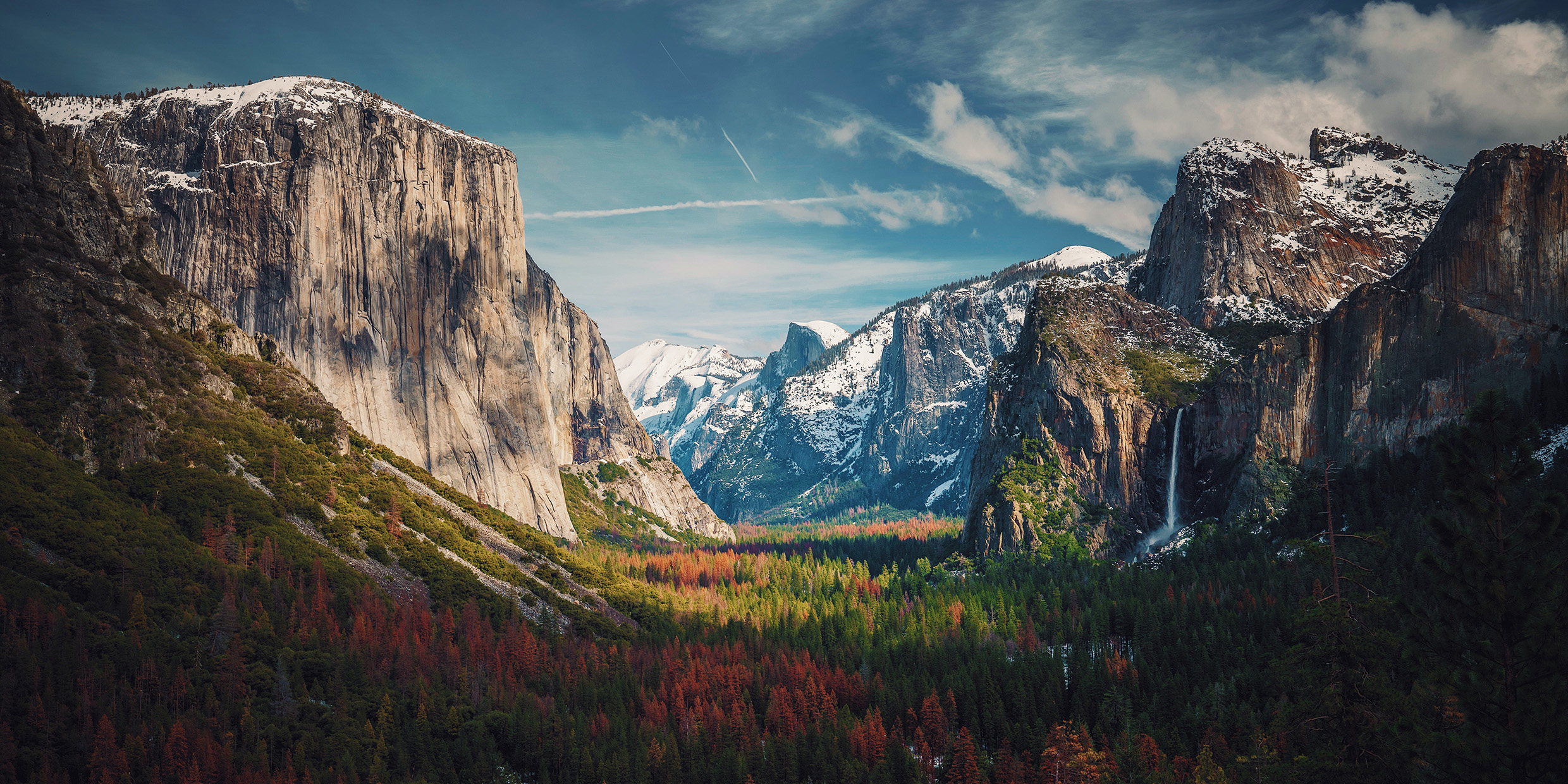Originally published 1 October 1990
In the early morning hours of March 26, 1872, an earthquake shook Yosemite Valley in the Sierra Nevada mountains of California.
John Muir was awakened by the quake. He ran out of his tiny cabin near the base of Sentinel Rock, both glad and frightened, shouting “A noble earthquake!” Then he held his breath to see if the shaking earth would confirm his theory that talus slopes of mountains, those heaping ramps of broken rock at the base of so many precipitous peaks, had been caused by quakes.
Suddenly, out of the eerie silence came a tremendous roar. The Eagle Rock, a short distance up the valley, gave way. Down it came to the valley floor in thousands of boulder-sized fragments, a huge and terrible cascade as perfect in form as a rainbow and as wild as a mountain storm.
When at last the ear-splitting sound subsided, Muir trotted off up the valley through moonlight to inspect this newest product of Nature’s art.
The other inhabitants of Yosemite didn’t share Muir’s wild enthusiasm and unquenchable curiosity. Indians gathered frightened in the middle of the valley convinced that angry spirits of the rocks were trying to kill them. The few whites who wintered in the valley assembled in front of Hutchings Hotel, shoring up each other’s courage and contemplating flight to steadier ground.
Muir was bemused by his neighbors’ panic. He was inclined to take a longer, grander view of things. The earthquake, the fallen rocks, the groves of giant spruce mowed down and crushed like weeds were just a single beautiful phrase in the music of the landscape: “Harmonious notes in the song of creation,” said Muir, “varied expressions of God’s love.”
A nobody in the woods
He was destined to become America’s best-loved nature writer, but at the time of the earthquake John Muir was “an unknown nobody in the woods,” as he called himself. He worked as a sawmill operator for hotelier James Hutchings (cutting only wind-felled trees). He was a winter caretaker for early residents of the valley. He explored alone the wild country above and beyond the valley. And almost against his will he become involved in one of the nastiest little scientific controversies of the 19th century.
The people who gathered in front of Hutchings Hotel in the aftermath of the quake had good reason to be scared. No less an authority than Josiah D. Whitney, professor of geology at Harvard and state geologist of California, believed that the magnificent Yosemite Valley had been created by an earthquake. According to Whitney, a great slice of the mountains had collapsed into the Earth’s interior in a cataclysm of epic proportions, and into this gaping trench the detritus of centuries had accumulated, gradually filling the valley to its present level.
John Muir teased his Yosemite friends that the rumblings and shakings were the prelude to another of Whitney’s catastrophic events — the floor of valley was about to collapse again, like rotted planks into a bottomless basement. But he knew better. He had already worked out his own theory for how the valley was formed: It was shaped not by earthquakes but by ice.
In his solitary rambles Muir had seen ample evidence of glaciers: scratches high on sheer valley walls, ridges of glacial debris on the valley floor, and tributary streams of the Merced River tumbling in precipitous waterfalls over cliffs gouged vertical by ice. The valley, said Muir, had once been filled with a colossal glacier. Indeed, the entire Sierra range had been blanketed by ice. He explained his theory to all who would listen.
But the official story was already down on paper in Josiah Whitney’s Yosemite Guide Book. The valley had been formed in a terrible earthquake. Whitney ridiculed the woodsy upstart who dared to question his authority, calling Muir “that shepherd,” ” a mere sheep-herder,” and “an ignoramus.”
Following the evidence
Muir trusted his eyes more than the authority of self-proclaimed experts. He had tracked the vanished glaciers back to their sources high in the mountains to the east of the valley, and there discovered — for the first time in the Sierra Nevada — active glaciers on the highest peaks. These were the very instruments he needed, on a larger scale, to carve out Half Dome, El Capitan, Cathedral Rocks, and the other spectacular scenery of Yosemite Valley.
One might think that the earthquake of 1872 would have shaken Muir’s faith in his own powers of observation. The other inhabitants of the valley were convinced that the vindicated Whitney, and they called Muir “a fool” and his ideas “crazy.” But in the matter of the glaciers John Muir was right and the professional geologists were wrong.
Muir didn’t remain for long an “unknown nobody in the woods.” His lyrical writings about Yosemite brought him to national attention, and he used his considerable authority to support the establishment of a national park that would preserve the wild Sierra Nevada for future generations.
On October 1, 1890 — exactly one hundred years ago today — President Benjamin Harrison signed into law the Act of Congress creating Yosemite National Park.



